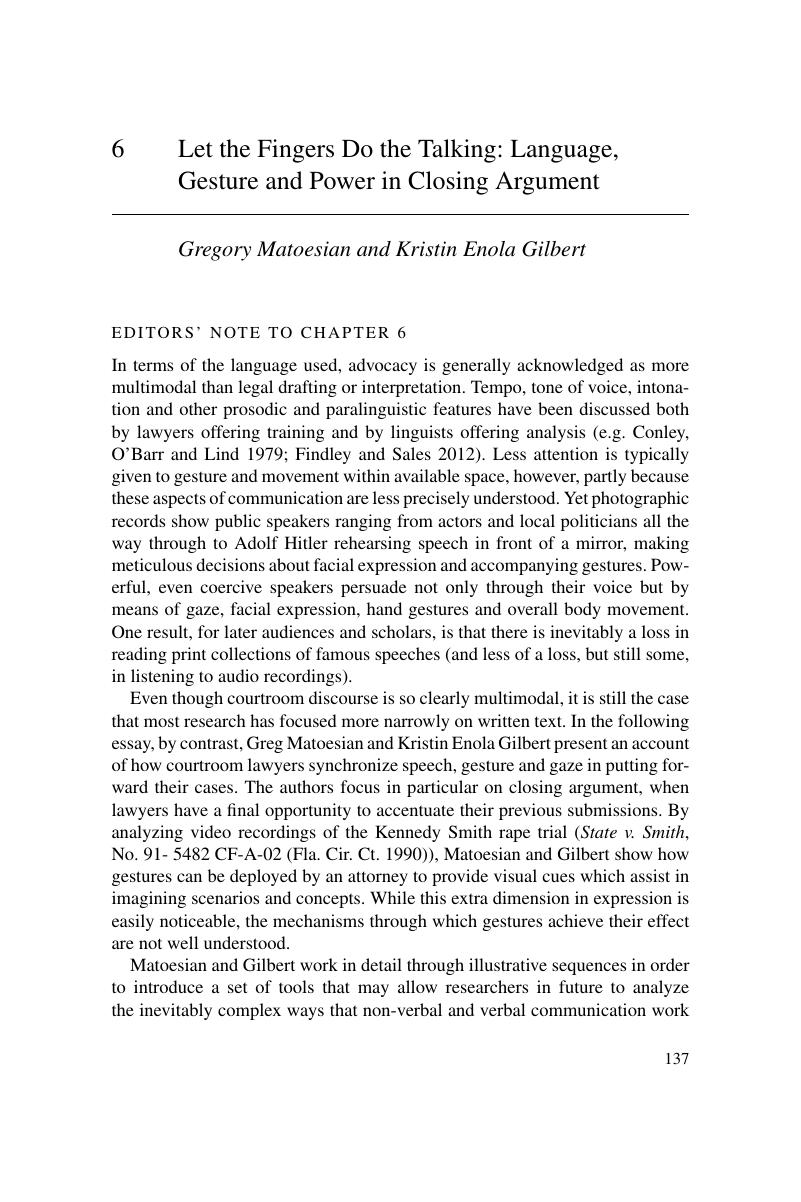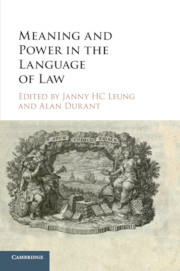Book contents
- Meaning and Power in the Language of Law
- Meaning and Power in the Language of Law
- Copyright page
- Contents
- Contributors
- Acknowledgements
- Editors' Introduction
- Part I Sui generis or Socially Problematic: The Character of Legal Language
- Part II Imperfect Fit between Legal Categories and Social Discourse
- Part III Written in Silence: Hidden Social Meanings in Legal Discourse
- 6 Let the Fingers Do the Talking: Language, Gesture and Power in Closing Argument
- 7 Questions about Questioning: Courtroom Practice in China and the United States
- 8 Law, Language and Community Sentiment: Behind Hate Speech Doctrine in India
- Part IV Conflict between Linguistic and Legal Ideologies
- Part V Demands of Law and Limits of Language
- Afterword
- Index
- References
6 - Let the Fingers Do the Talking: Language, Gesture and Power in Closing Argument
from Part III - Written in Silence: Hidden Social Meanings in Legal Discourse
Published online by Cambridge University Press: 28 December 2017
- Meaning and Power in the Language of Law
- Meaning and Power in the Language of Law
- Copyright page
- Contents
- Contributors
- Acknowledgements
- Editors' Introduction
- Part I Sui generis or Socially Problematic: The Character of Legal Language
- Part II Imperfect Fit between Legal Categories and Social Discourse
- Part III Written in Silence: Hidden Social Meanings in Legal Discourse
- 6 Let the Fingers Do the Talking: Language, Gesture and Power in Closing Argument
- 7 Questions about Questioning: Courtroom Practice in China and the United States
- 8 Law, Language and Community Sentiment: Behind Hate Speech Doctrine in India
- Part IV Conflict between Linguistic and Legal Ideologies
- Part V Demands of Law and Limits of Language
- Afterword
- Index
- References
Summary

- Type
- Chapter
- Information
- Meaning and Power in the Language of Law , pp. 137 - 163Publisher: Cambridge University PressPrint publication year: 2018
References
References
References
- 1
- Cited by



